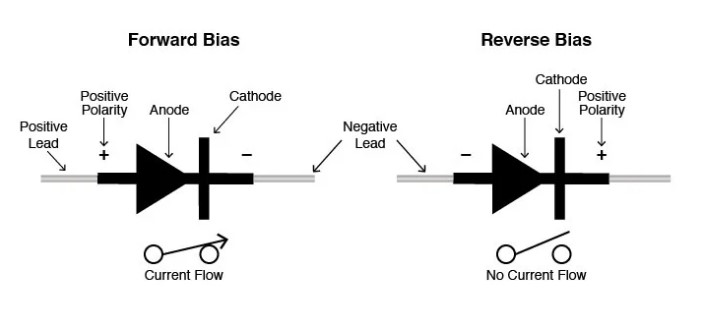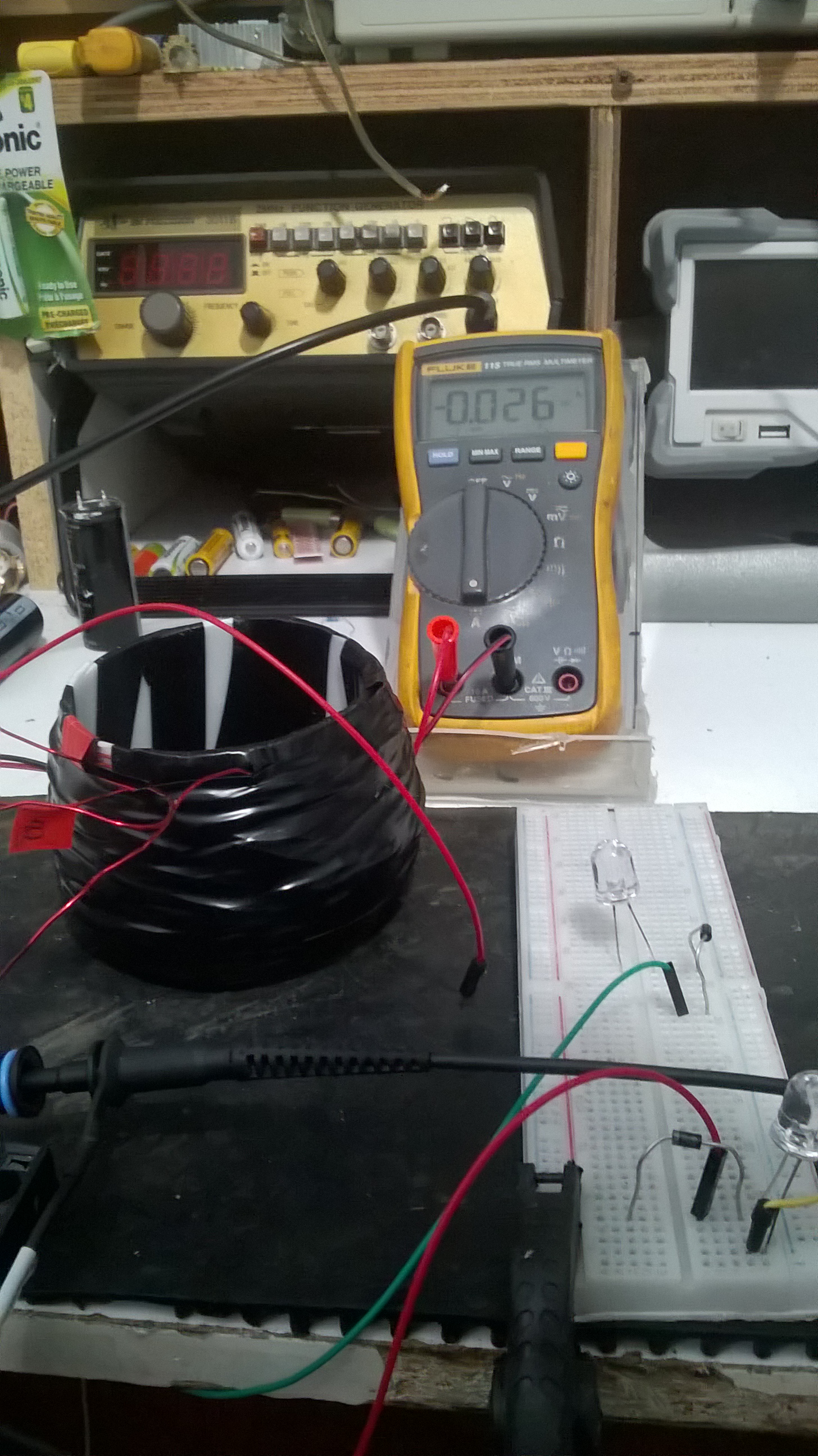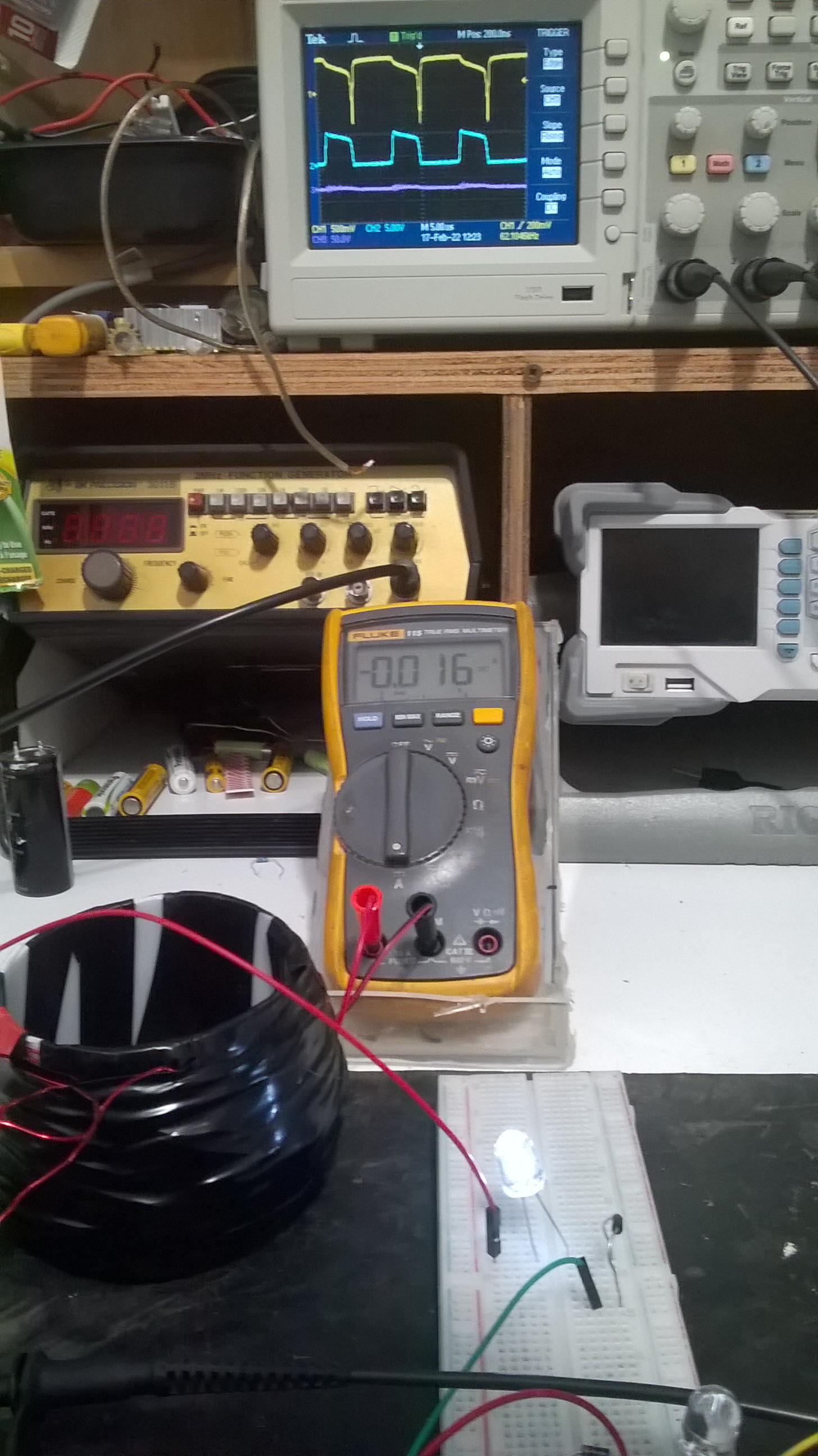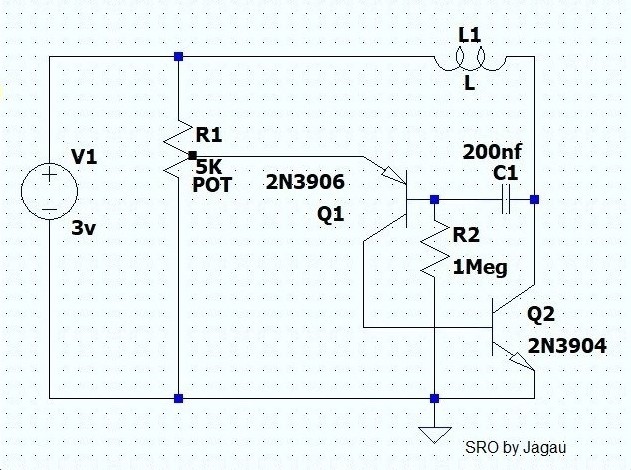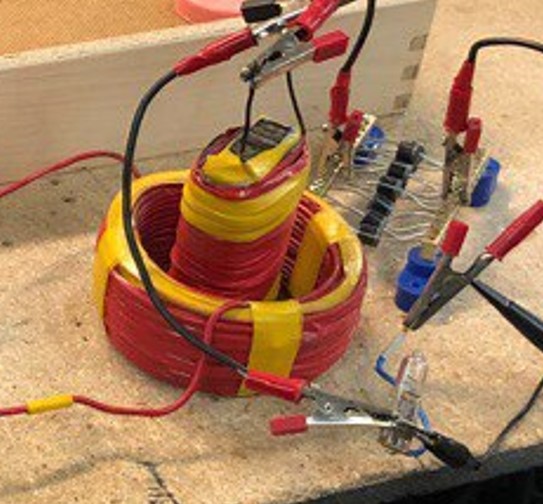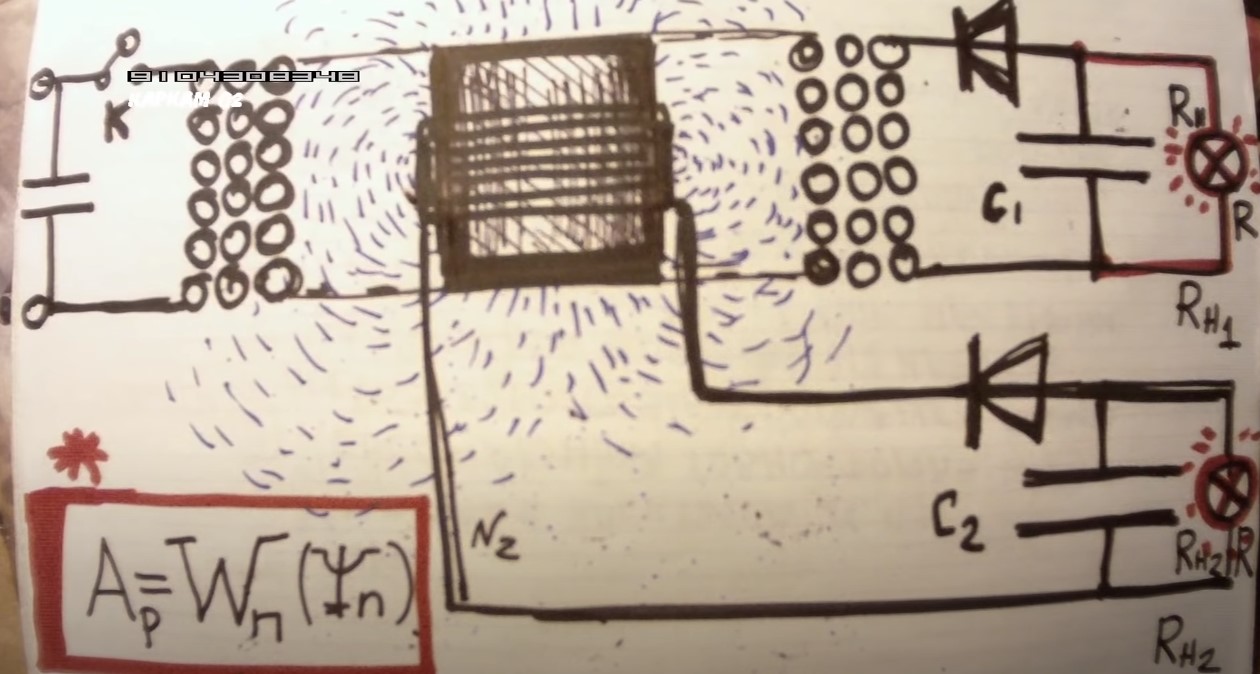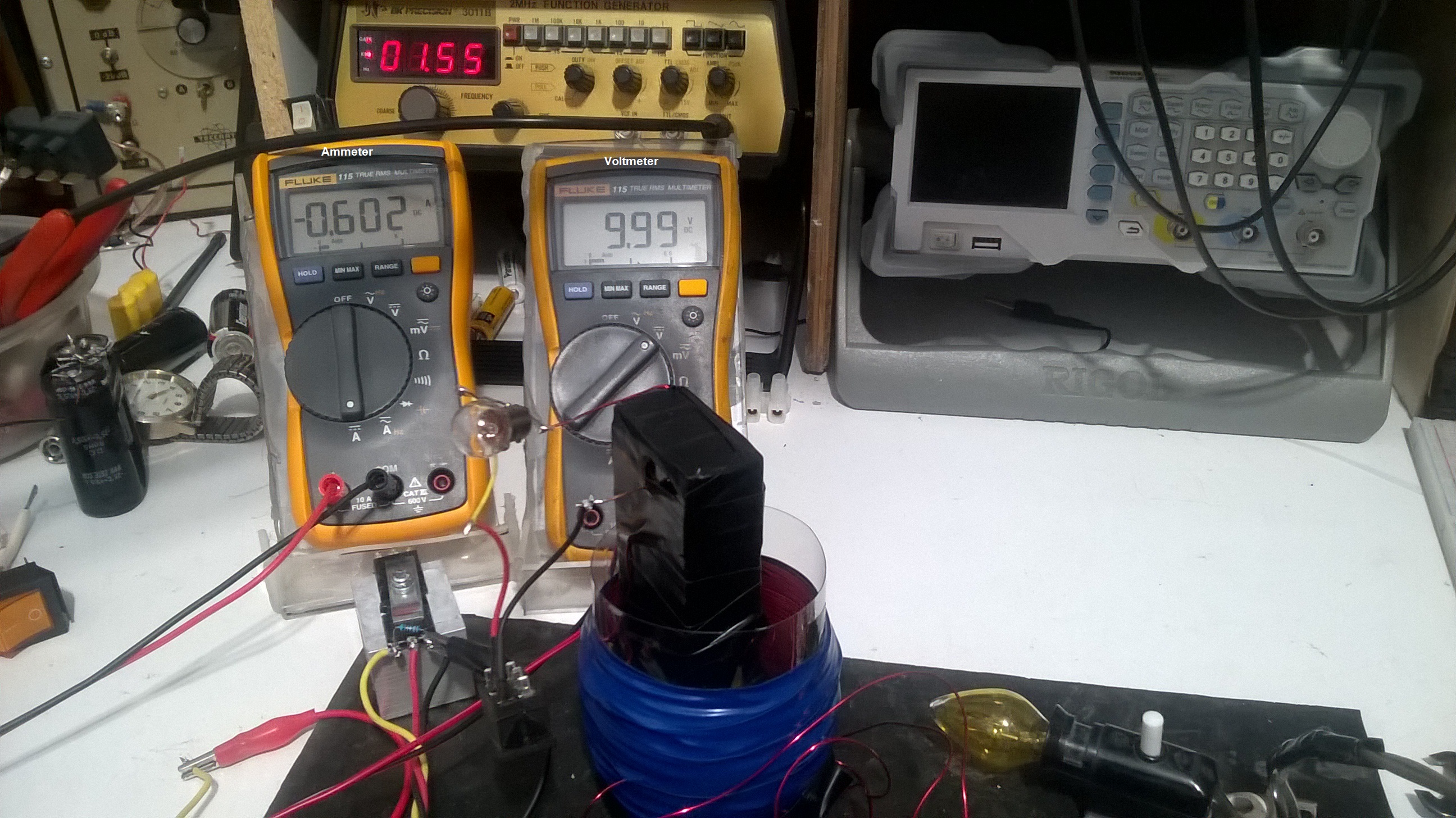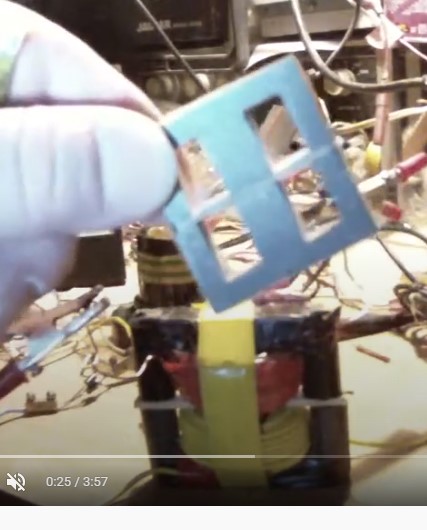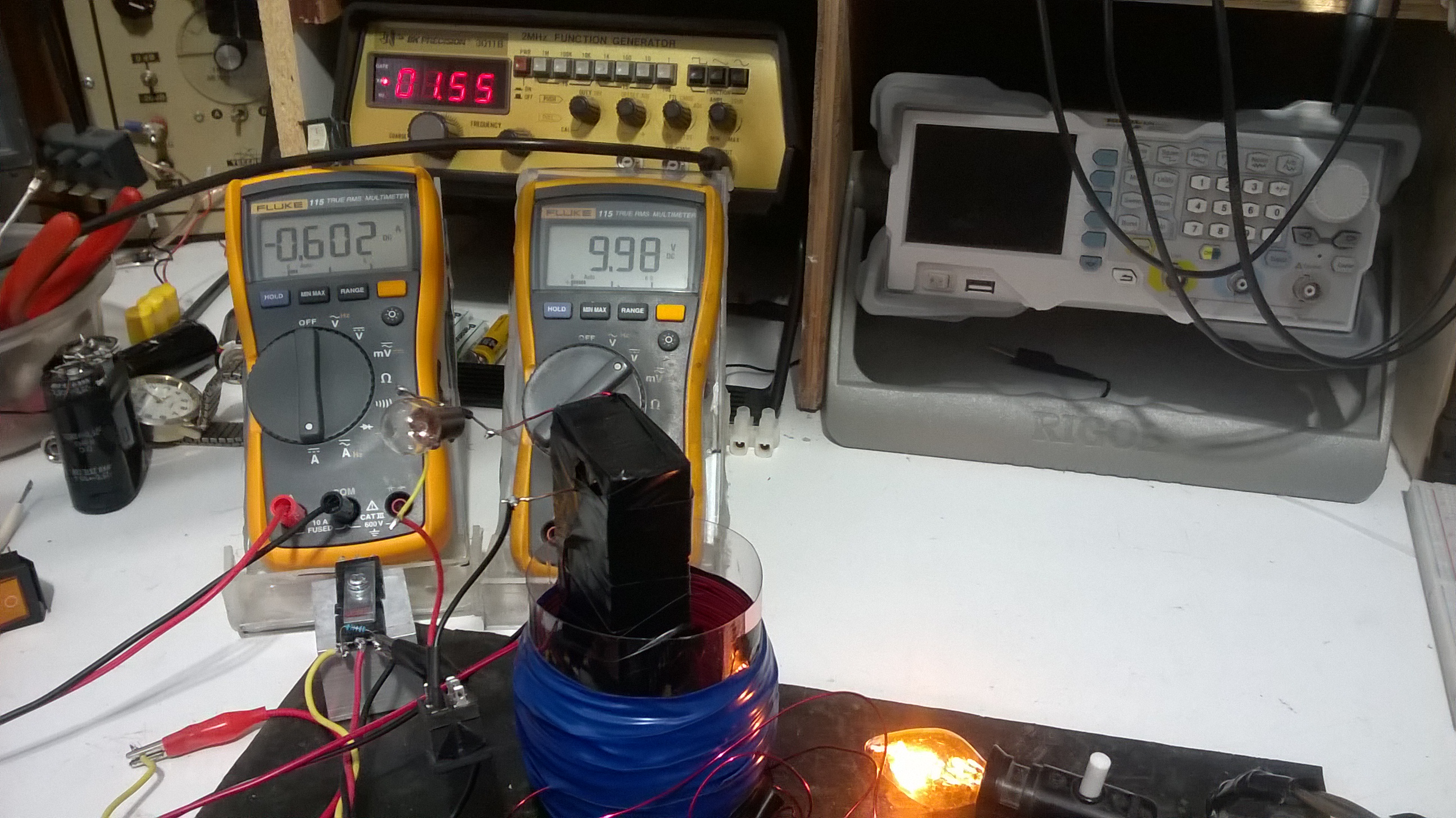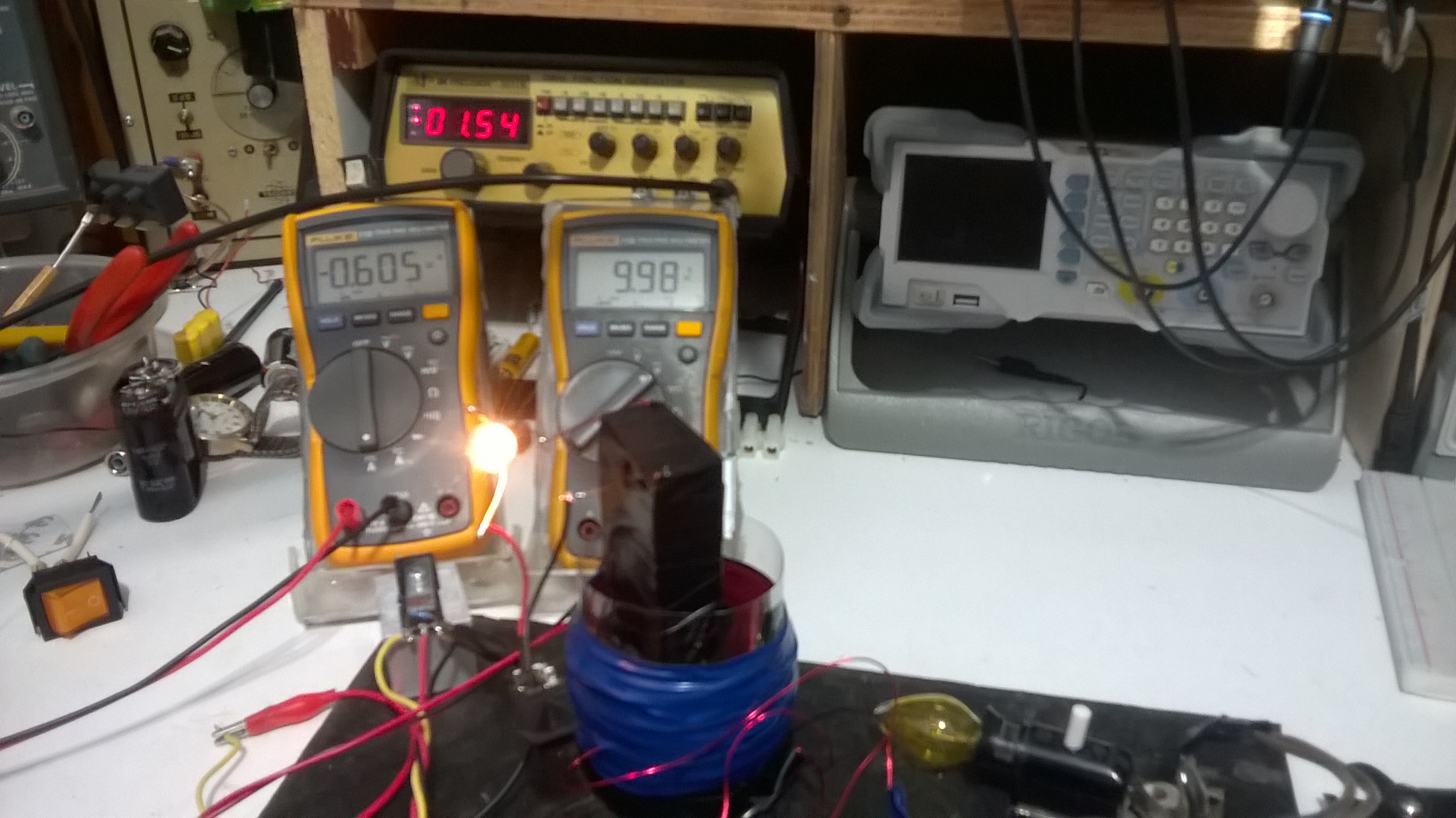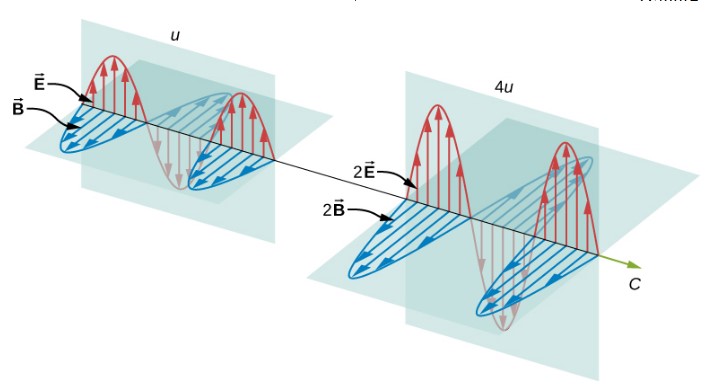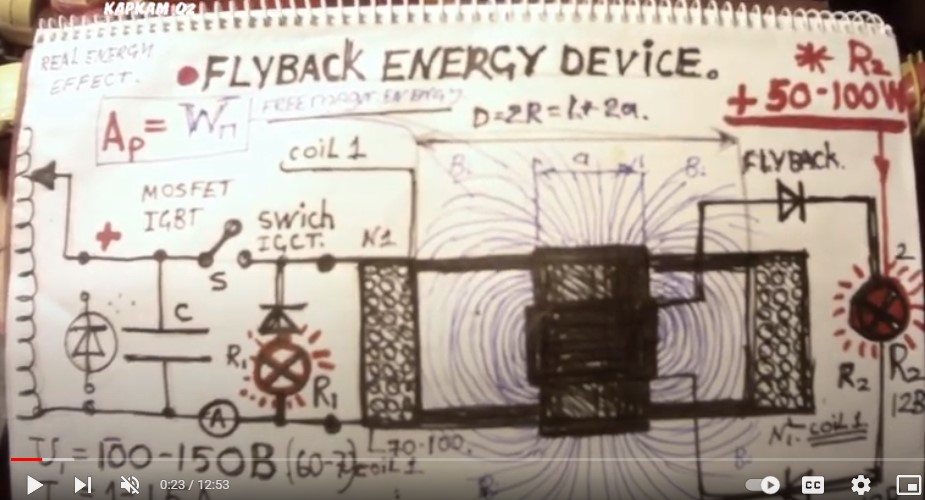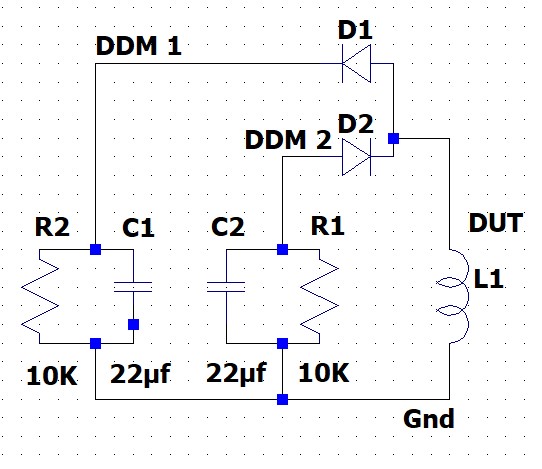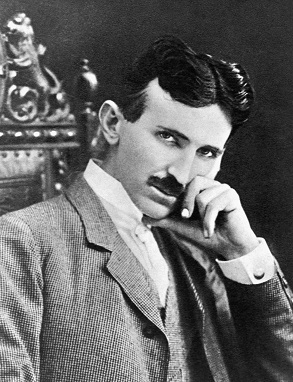Andrey Melnichenko is another great inventor and has several patents on the effect he found. On his Utube channel he made countless videos to demonstrate the effect he found.
Chris has made several demonstrations to allow everyone to better understand the different effects of Andrey Melnichenko's research and I would like to make it a study and continuity of his thread.
When doing various searches on the web it is very rare to find those who have managed to make a replica of its effect.
To study the phenomenon take the very simple diagram from the website of A. Melnichenko
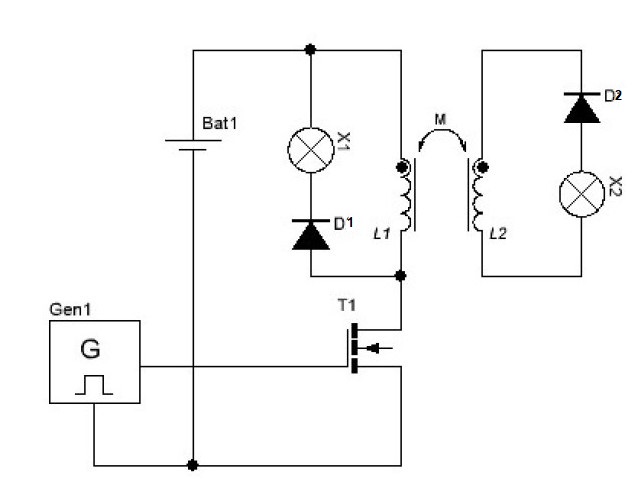
This schematic has two coils L1 and L2 in mutual connection and as can be noted the same phase polarity (dot). To understand what is happening in the coils, an analysis of the polarities is necessary.
As Melnichenko himself explains there are two phases to take into consideration, the 1st magnetization and the 2nd demagnetization.
1 When magnetizing, T1 closes and L1 becomes negative on the bottom and positive on the top with the same phase polarities on L2. D1 and D2 being in reverse polarity then X1 and X2 do not light up.
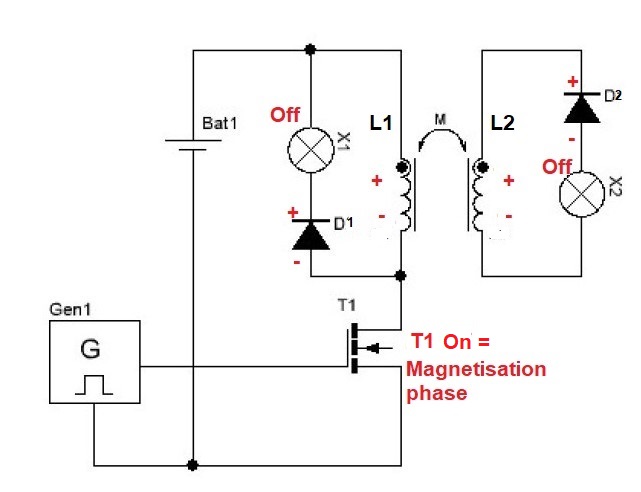
2 During demagnetization, T1 opens causing L1 and L2 to reverse polarity as shown in the following diagram:
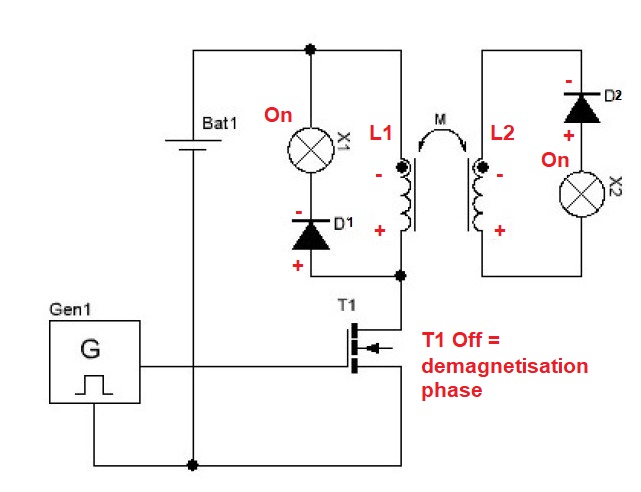
Since D1 and D2 are now forward biased then both diodes conduct so that X1 and X2 turn on.
Practical experience will follow to demonstrate if this is indeed what is happening.
Jagau





